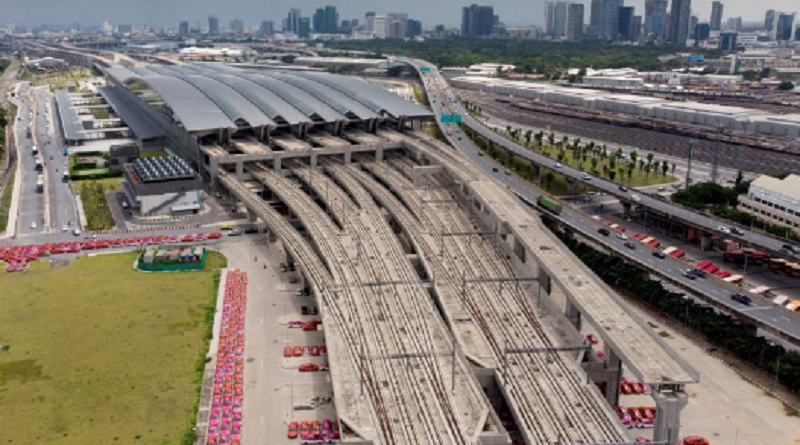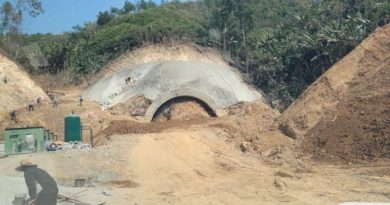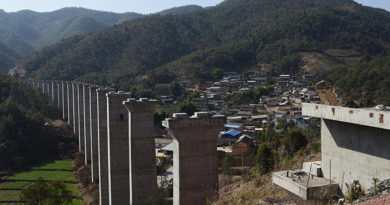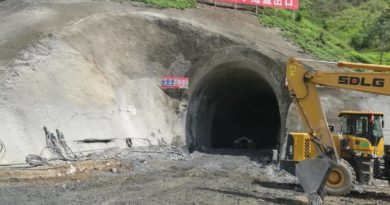Thailand Looking To Benefit From Spill Over Of Laos China Rail Link
Source: NST
Thailand hopes to benefit from the spill over effects from the Laos – China high speed railway link after the Asian giant fully opens its borders next year.
The Association of Thai Travel Agents (Atta) believes that about 3 million Chinese tourists may use the almost 423 km long electrified railway that runs between the Lao capital of Vientiane and Boten town in northern Laos bordering China.
The high speed railway started operating last December and it forms a section of the Kunming – Singapore railway project, which connects China’s Yunnan province capital Kunming with Singapore and it runs through Laos, Thailand, and Malaysia.
According to a report in The Thaiger, Atta honorary secretary general Adith Chairattananon said Laos may not have the capability to support a large number of tourists, in terms of facilities or accommodation.
“Thailand must take this opportunity to serve the overflow coming across the land border.”

Adith said that about a million Chinese tourists entered Laos before the Covid-19 pandemic in 2019, with 80 per cent of them arriving via air.
Once China relaxes its border controls imposed due to the Covid-19 pandemic, it is estimated the number of tourists from China could reach up to 5 million next year. Most are expected to travel via land through the Laos – China railway connecting Kunming and Vientiane.
Atta president Sisdivachr Cheewarattanaporn also reminded Thai travel agents that they should not bank on the return of Chinese tourists this year and that next year was more realistic.
He said it was not all doom and gloom regarding travelers from mainland China, as a small number of Chinese tourists have returned to Thailand.
“Despite border closures, Thailand still has Chinese travelers who reside in Hong Kong, Taiwan, Laos and Cambodia visiting the country.”
Meanwhile, Tourism Authority of Thailand (TAT) governor Yuthasak Supasorn said the agency will use its 2023 budget to promote the inbound tourist market.
He said TAT had a budget of 937 million baht, up by almost 90 per cent from 2022, and would carry out various roadshows and trade shows to boost tourists arrivals.
As of Oct 25, tourists arrivals in Thailand has hit 7.3 million while Laos has already seen over 650,000 foreign tourists this year until September.
The Laotian government hopes to attract at least 900,000 foreign visitors by the year’s end, with tourism receipts reaching over US$218 million.
It had been previously reported that Thailand was discussing with Lao officials on the high speed rail connection to promote a more seamless connection from Thailand to China.
According to a Bangkok Post report, Deputy Prime Minister Anutin Charnvirakul and Transport Minister Saksayam Chidchob met Laos’ Minister of Public Works and Transport and related agencies in Laos capital Vientiane last month to discuss the interlinking railway service.
During the meeting, Anutin had said the two countries agreed to upgrade bilateral relations to that of strategic partners for economic growth and sustainable development.
He said the China – Laos high-speed railway will also benefit Thailand in terms of logistics and tourism.
The government will connect the high speed service from Vientiane to Nong Khai province in Thailand with an eye on extending it to Bangkok in the future, he said.
Saksayam said the rail connection between the three nations will create an opportunity for Thailand and Laos to expand their industries, agriculture, trade, and investment.
Thailand has already started construction on the rail connection under two phases.
The first phase will link Bangkok and Nakhon Ratchasima, and it is expected to be completed in 2026 while the second phase will continue from Nakhon Ratchasima to Nong Khai, bordering Laos.
The 250 km first phase will cost almost 180 billion baht and will run from Bang Sue in Bangkok to Nakhon Ratchasima with a total of six stations.
Thailand and Laos have also agreed to jointly invest in the construction of a new bridge across the Mekong River linking Nong Khai and Vientiane.
The bridge will be located 30 km from the first Thai – Laos Friendship Bridge, also in Nong Khai province.




